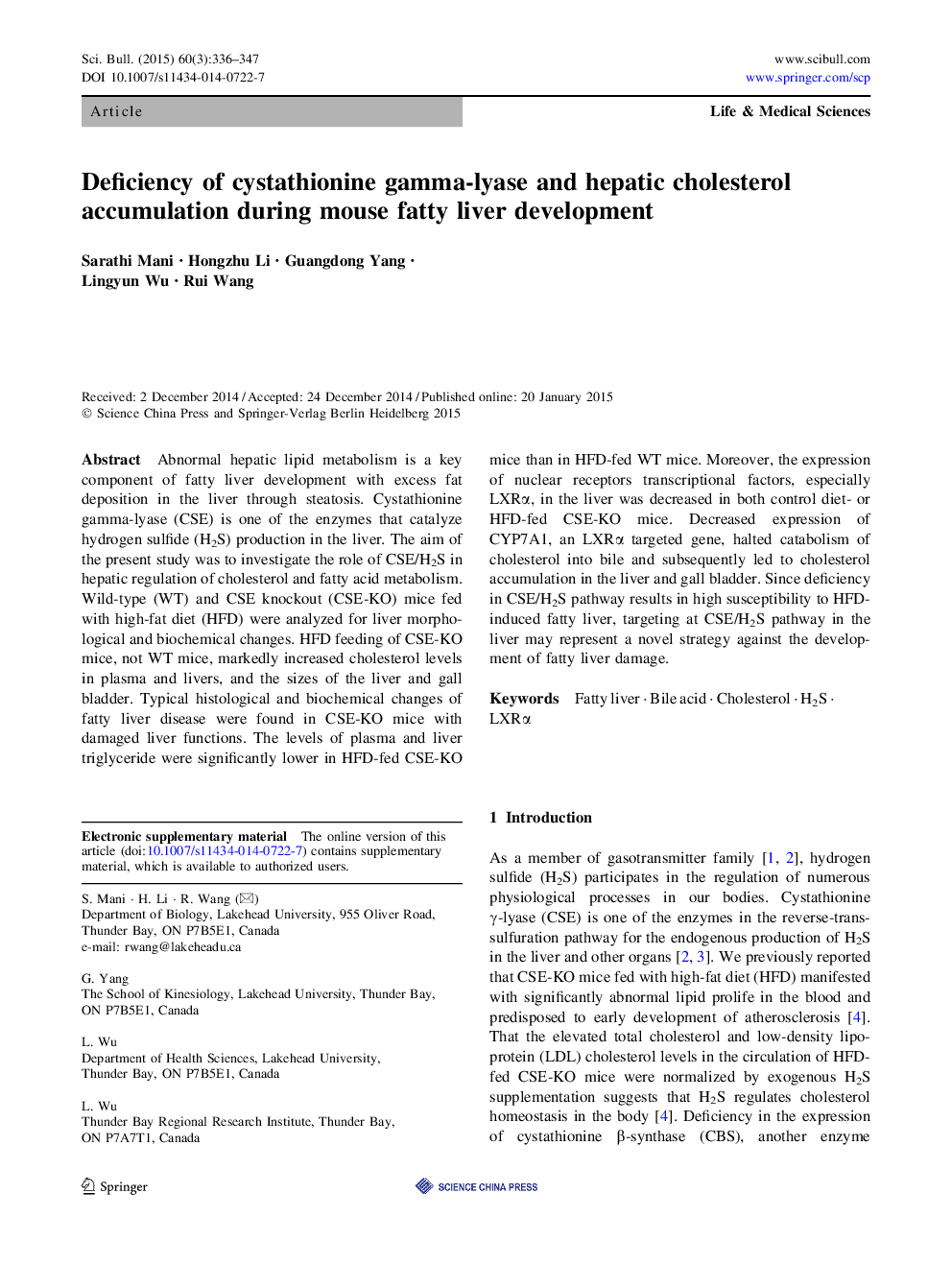| Article ID | Journal | Published Year | Pages | File Type |
|---|---|---|---|---|
| 5789245 | Science Bulletin | 2015 | 12 Pages |
Abstract
Abnormal hepatic lipid metabolism is a key component of fatty liver development with excess fat deposition in the liver through steatosis. Cystathionine gamma-lyase (CSE) is one of the enzymes that catalyze hydrogen sulfide (H2S) production in the liver. The aim of the present study was to investigate the role of CSE/H2S in hepatic regulation of cholesterol and fatty acid metabolism. Wild-type (WT) and CSE knockout (CSE-KO) mice fed with high-fat diet (HFD) were analyzed for liver morphological and biochemical changes. HFD feeding of CSE-KO mice, not WT mice, markedly increased cholesterol levels in plasma and livers, and the sizes of the liver and gall bladder. Typical histological and biochemical changes of fatty liver disease were found in CSE-KO mice with damaged liver functions. The levels of plasma and liver triglyceride were significantly lower in HFD-fed CSE-KO mice than in HFD-fed WT mice. Moreover, the expression of nuclear receptors transcriptional factors, especially LXRα, in the liver was decreased in both control diet- or HFD-fed CSE-KO mice. Decreased expression of CYP7A1, an LXRα targeted gene, halted catabolism of cholesterol into bile and subsequently led to cholesterol accumulation in the liver and gall bladder. Since deficiency in CSE/H2S pathway results in high susceptibility to HFD-induced fatty liver, targeting at CSE/H2S pathway in the liver may represent a novel strategy against the development of fatty liver damage.
Related Topics
Physical Sciences and Engineering
Chemistry
Chemistry (General)
Authors
Sarathi Mani, Hongzhu Li, Guangdong Yang, Lingyun Wu, Rui Wang,
